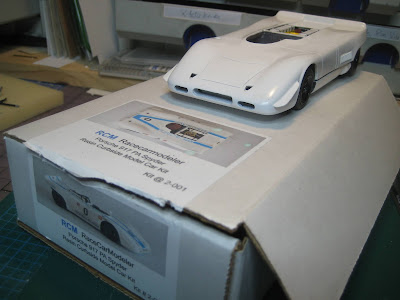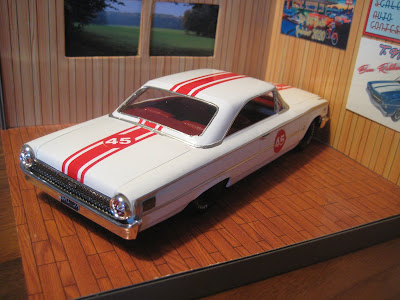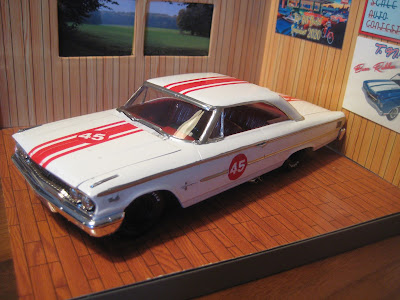As a one-time owner of a Rover 2000 TC, known to some as 'the poor man's Jag', I secretly lusted after a Mark II, although I would never have admitted it at the time. I also had the opportunity of working on Rovers (mine as well as customers') and Jags, and concluded that at best, the Jag was no more reliable than the Rover. Perhaps the Rover's use of a mechanical fuel pump put it marginally ahead of the Jag, which relied on a pair of the dreaded S.U. electric pumps; both used the same S.U. HS8 2" carbs, Lucas electrics and Smiths gauges and heater fans.
Tamiya's kit is absolutely superb, even coming with a sheet of dark red felt for the carpet, and I began assembling it completely stock after concluding that the V12 from the XJ-S really wouldn't fit. (That would be a project for the whale-like Mark X, in my view, which would make it a Mark XII. But I digress.)
The body is done, with the exception of a couple of bubbles low on the trunk lid that will need some sanding and respraying. I'll probably dribble a bit more panel line down the seams as the paint refused to flow into these grooves adequately.
The callout for body colour is a bit odd: Instructions call for "TS-43, British Racing Green"; but my can of TS-43 clearly says Racing Green, and to my eyes is a bit light. TS-9, British Green, is darker and in my view closer to the correct colour, although to be fair the Rover was Willow Green, a couple of shades darker than the classic BRG. And I checked the Tamiya website: there doesn't appear to be a "British Racing Green" in Tamiya's colour chips.
The interior colours for leather are very nice, with the leather a 50:50 mix of flat and gloss reds (XF-7 and X-7 respectively), and carpeted sections 4 parts flat red cut with 1 part smoke (X-19).
Stay tuned! Yes, yes, I'll get back to the 917K eventually.

































